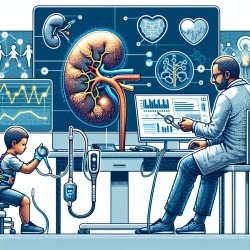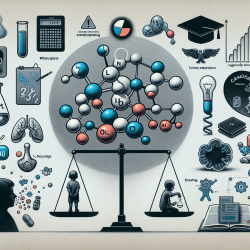Introduction
As practitioners in the field of speech-language pathology, our goal is to create optimal outcomes for children through evidence-based interventions. The research article titled "Prevalence and Correlates of Accelerometer-Based Physical Activity and Sedentary Time Among Kidney Transplant Recipients" provides valuable insights that can be leveraged to enhance our practice. Although the study focuses on kidney transplant recipients, the findings regarding physical activity and sedentary behavior can be translated into actionable strategies for improving child outcomes in our field.
Understanding the Research
The study conducted by Vallance et al. (2019) examined physical activity and sedentary time using accelerometers among kidney transplant recipients. The findings revealed that participants engaged in low levels of moderate-to-vigorous physical activity (MVPA) and high levels of sedentary behavior. These behaviors were associated with demographic and clinical factors such as age, body mass index (BMI), education, and income.
Applying Research Insights to Speech-Language Pathology
While the study focused on a specific population, the insights can be applied to our practice in several ways:
- Promoting Physical Activity: Encourage children to engage in regular physical activity as part of their daily routine. This can be integrated into therapy sessions by incorporating movement-based activities that align with therapy goals.
- Reducing Sedentary Time: Identify opportunities to minimize sedentary behavior during therapy sessions. This can include standing activities, interactive games, and incorporating short movement breaks.
- Personalized Interventions: Consider individual factors such as age, BMI, and socioeconomic status when designing therapy plans. Tailoring interventions based on these factors can lead to more effective outcomes.
Encouraging Further Research
The study highlights the need for further research using objective measures like accelerometers to assess physical activity and sedentary time. As practitioners, we can contribute to this research by documenting and sharing our observations and outcomes related to physical activity and sedentary behavior in children.
Conclusion
By integrating the insights from this research into our practice, we can enhance the effectiveness of our interventions and promote better outcomes for children. Encouraging physical activity and reducing sedentary time are key strategies that can be applied across various therapy settings.
To read the original research paper, please follow this link: Prevalence and Correlates of Accelerometer-Based Physical Activity and Sedentary Time Among Kidney Transplant Recipients.










